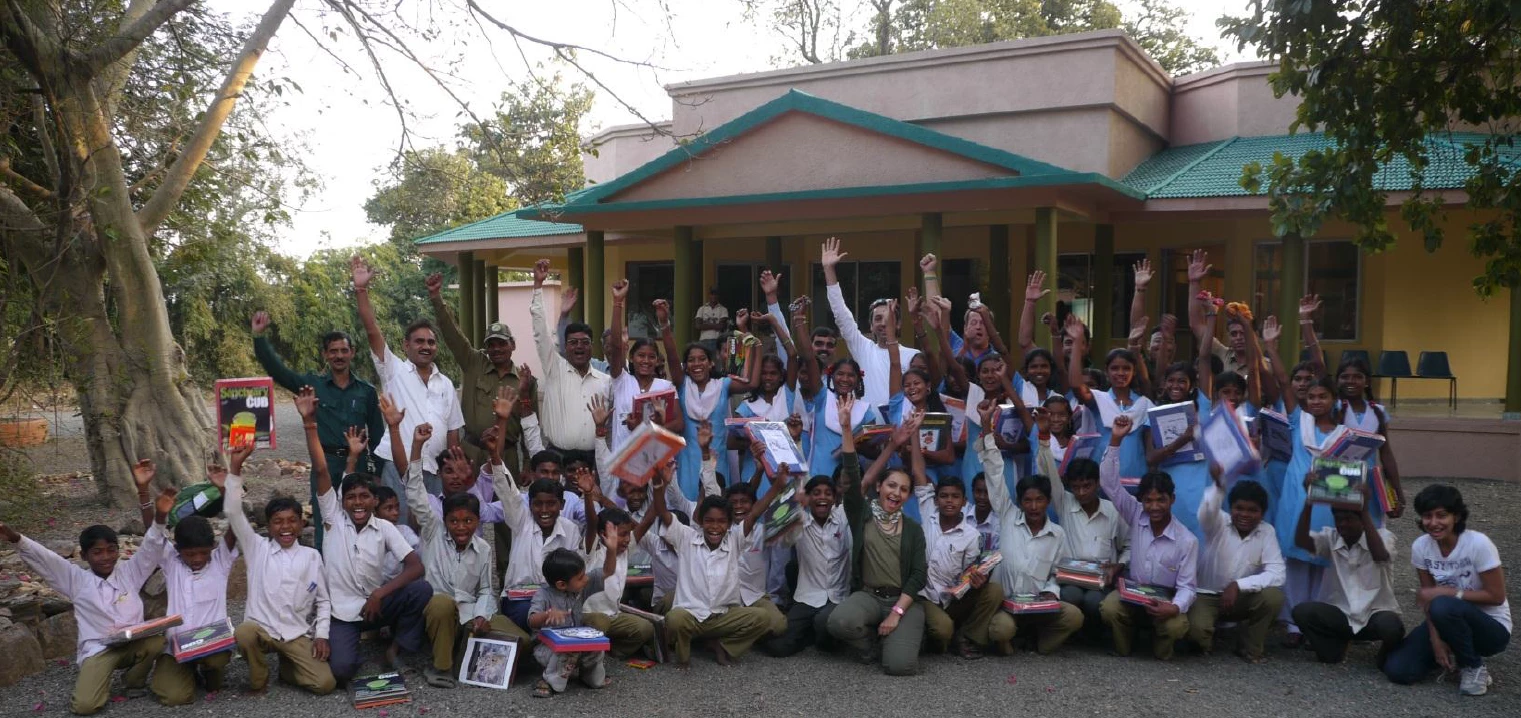
In 2010, 15 days after graduating from college, with nothing but a backpack and an old water bottle, I stood in front of a large gate with a rusted sign welcoming me to the “Pench Tiger Reserve.” The same reserve that inspired Rudyard Kipling’s, Jungle Book. None of the mock interviews or standardized testscould have prepared me for the job at hand. I was there to set up a small nonprofit whose mission was to involve youth from the local community near the tiger reserve and instill in them a love and passion for the environment. Specifically, instill in these young minds a commitment to safeguard the 41 tigers that roamed wild in the reserve.
As a 21 year old, my employers were entrusting upon me this responsibility based on a simple philosophy – if you want to inspire young people – give the opportunity to someone young! In the two and a half years that I spent in the reserve, with the help of the forest department, three local schools and community members, we were able to invite leading conservationists, teachers, innovators and environmental enthusiasts to conduct hands-on workshops with children aged 10-16 from within the community. Every workshop answered questions on the importance of environmental protection and the rationale behind how simple, local efforts can have positive impacts globally. These curious minds absorbed knowledge like sponges and within a few years, we had the next set of forest protectors and tiger champions. They are influencers in the community and are currently involved in small enterprises that help the local economy and preserve the tiger habitat in and around the Pench Tiger Reserve.
Since leaving the Reserve, I have been active in many youth groups around the world. One such organization is the 2041 Foundation whose mission is to provide leadership training to young people especially from developing countries to help preserve the environment. As a part of this training, on an expedition to Antarctica, I was able to see firsthand the effects of climate change on our fragile ecosystems. This experience had a profound influence on my commitment to conservation.
At present, I am the youngest member of the Global Wildlife Program, a partnership funded by the Global Environment Facility (GEF) and led by the World Bank Group for wildlife conservation, crime prevention and sustainable development across 19 countries in Asia and Africa. Sitting at the table with stakeholders has given me an opportunity to understand the role that young people can play in current conservation efforts. Youth have a strong sense of issues that concern their well-being and they have a greater stake in the long-term sustainability of the environment. In order to get them more involved in these issues, it helps if elected political leaders engage with youth and demonstrate to them the willingness to work towards a common mission.
So how can you engage young people in your projects?
First, Pique their interest: provide an opportunity for young people to explore the wild. Get them out in nature and let the trees and the bugs do the talking.
Second, Sustainable Inspiration: Keeping young people involved in the fast-paced world where even hip-hop songs don’t last a week on the Billboard Charts is the most challenging step in this process. One of the most effective ways to address this is to help young people self-organize into groups. Let them create their agenda within your project’s framework and help them with resources that can enhance their individual potential. As you develop the program, they will bring unique ideas to the team and they will be personally invested in the outcomes of the project.
The final step is to Find the Gold Stars: in your interactions, you will find a few committed young people who will want to go beyond their list of tasks. Help them become role models within their peer networks and mentor them throughout their professional journey.
Conservation outcomes take a long time to come to fruition. Young people today will be decision makers tomorrow. They will be the ones that will remember a trip to a national park on their summer vacation, or the first time a butterfly perched itself on their hand, or the selfie that was photobombed by a llama. They will be the ones to stand up without fear and fight for wildlife and for our planet.
At many conferences, I have heard climate leaders and politicians mention the importance of preserving the planet for future generations. Of course, this is important, but the world’s wildlife has already fallen by 58% in the last 40 years. As we recognize the role of biodiversity on World Wildlife Day, I am happy to see the United Nations has themed this year “Listen to the Young Voices,” because without the involvement of young people the fight to save our wild species will be harder than ever.


Join the Conversation